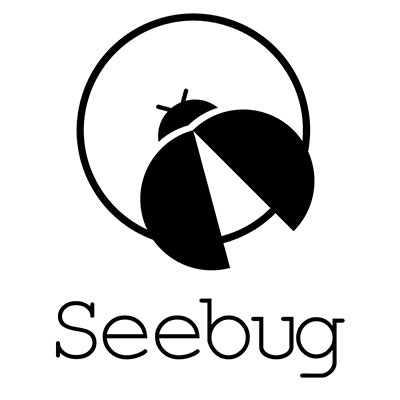# ICS Advisory (ICSA-20-184-01)
## Nortek Linear eMerge 50P/5000P
Original release date: July 02, 2020
[Print Document](javascript:window.print\(\);)
[Tweet](https://twitter.com/share?url=https%3A%2F%2Fus-
cert.cisa.gov%2Fics%2Fadvisories%2Ficsa-20-184-01)
[Like Me](https://www.facebook.com/sharer.php?u=https%3A%2F%2Fus-
cert.cisa.gov%2Fics%2Fadvisories%2Ficsa-20-184-01)
[Share](http://www.addthis.com/bookmark.php?url=https%3A%2F%2Fus-
cert.cisa.gov%2Fics%2Fadvisories%2Ficsa-20-184-01)
### Legal Notice
All information products included in [https://us-cert.gov/ics](/ics) are
provided "as is" for informational purposes only. The Department of Homeland
Security (DHS) does not provide any warranties of any kind regarding any
information contained within. DHS does not endorse any commercial product or
service, referenced in this product or otherwise. Further dissemination of
this product is governed by the Traffic Light Protocol (TLP) marking in the
header. For more information about TLP, see [https://www.us-
cert.gov/tlp/](/tlp/).
* * *
## 1\. EXECUTIVE SUMMARY
* **CVSS v3 10.0**
* **ATTENTION:** Exploitable remotely/low skill level to exploit
* **Vendor:** Nortek
* **Equipment:** Linear eMerge 50P/5000P
* **Vulnerabilities:** Path Traversal, Command Injection, Unrestricted Upload of File with Dangerous Type, Cross-site Request Forgery, Improper Authentication
## 2\. RISK EVALUATION
Successful exploitation of these vulnerabilities could allow a remote attacker
to gain full system access.
## 3\. TECHNICAL DETAILS
### 3.1 AFFECTED PRODUCTS
The following versions of Linear eMerge products are affected:
* Linear eMerge 50P/5000P Versions 4.6.07 (revision 79330) and prior
### 3.2 VULNERABILITY OVERVIEW
#### 3.2.1 [PATH TRAVERSAL
CWE-35](https://cwe.mitre.org/data/definitions/35.html)
The software uses external input to construct a pathname that should be within
a restricted directory, but does not properly neutralize sequences such as
"../" that can resolve to a location that is outside of that directory. This
allows attackers to traverse the file system to access files or directories
that are outside of the restricted directory.
[CVE-2019-7267](http://web.nvd.nist.gov/view/vuln/detail?vulnId=CVE-2019-7267)
has been assigned to this vulnerability. A CVSS v3 base score of 9.8 has been
assigned; the CVSS vector string is
([AV:N/AC:L/PR:N/UI:N/S:U/C:H/I:H/A:H](https://www.first.org/cvss/calculator/3.0#CVSS:3.0/AV:N/AC:L/PR:N/UI:N/S:U/C:H/I:H/A:H)).
#### 3.2.2 [IMPROPER NEUTRALIZATION OF SPECIAL ELEMENTS USED IN A COMMAND
('COMMAND INJECTION') CWE-77](https://cwe.mitre.org/data/definitions/77.html)
The application constructs an OS command using externally influenced input
from an upstream component, but incorrectly neutralizes special elements that
could modify the intended OS command when it is sent to a downstream
component. This could allow attackers to execute dangerous commands directly
on the operating system.
[CVE-2019-7269](http://web.nvd.nist.gov/view/vuln/detail?vulnId=CVE-2019-7269)
has been assigned to this vulnerability. A CVSS v3 base score of 10.0 has been
assigned; the CVSS vector string is
([AV:N/AC:L/PR:N/UI:N/S:C/C:H/I:H/A:H](https://www.first.org/cvss/calculator/3.0#CVSS:3.0/AV:N/AC:L/PR:N/UI:N/S:C/C:H/I:H/A:H)).
#### 3.2.3 [UNRESTRICTED UPLOAD OF FILE WITH DANGEROUS TYPE
CWE-434](https://cwe.mitre.org/data/definitions/434.html)
The vulnerability exists due to the absence of file extension validation when
uploading files through the firmware upgrade upload script. A remote,
unauthenticated attacker can upload files with arbitrary extensions into a
directory within the application's web root and execute them with privileges
of the web server.
[CVE-2019-7268](http://web.nvd.nist.gov/view/vuln/detail?vulnId=CVE-2019-7268)
has been assigned to this vulnerability. A CVSS v3 base score of 10.0 has been
assigned; the CVSS vector string is
([AV:N/AC:L/PR:N/UI:N/S:C/C:H/I:H/A:H](https://www.first.org/cvss/calculator/3.0#CVSS:3.0/AV:N/AC:L/PR:N/UI:N/S:C/C:H/I:H/A:H)).
#### 3.2.4 [CROSS-SITE REQUEST FORGERY (CSRF)
CWE-352](https://cwe.mitre.org/data/definitions/352)
The affected application allows users to perform certain actions via HTTP
requests without performing any validity checks to verify the requests. This
can be exploited to perform certain actions with administrative privileges if
a logged-in user visits a malicious website.
[CVE-2019-7270](http://web.nvd.nist.gov/view/vuln/detail?vulnId=CVE-2019-7270)
has been assigned to this vulnerability. A CVSS v3 base score of 5.0 has been
assigned; the CVSS vector string is
([AV:N/AC:H/PR:N/UI:R/S:U/C:L/I:L/A:L](https://www.first.org/cvss/calculator/3.0#CVSS:3.0/AV:N/AC:H/PR:N/UI:R/S:U/C:L/I:L/A:L)).
#### 3.2.5 [IMPROPER AUTHENTICATION
CWE-287](https://cwe.mitre.org/data/definitions/287.html)
The vulnerability exists due to insufficient validation of input data in
authentication mechanism. A remote attacker can send a specially crafted HTTP
request abusing the Cookie header value traversing to an arbitrary session
file that bypasses authentication checks and gains unauthorized access to the
application.
[CVE-2019-7266](http://web.nvd.nist.gov/view/vuln/detail?vulnId=CVE-2019-7266)
has been assigned to this vulnerability. A CVSS v3 base score of 8.1 has been
assigned; the CVSS vector string is
([AV:N/AC:H/PR:N/UI:N/S:U/C:H/I:H/A:H](https://www.first.org/cvss/calculator/3.0#CVSS:3.0/AV:N/AC:H/PR:N/UI:N/S:U/C:H/I:H/A:H)).
### 3.3 BACKGROUND
* **CRITICAL INFRASTRUCTURE SECTORS:** Commercial Facilities
* **COUNTRIES/AREAS DEPLOYED:** Worldwide
* **COMPANY HEADQUARTERS LOCATION:** Italy
### 3.4 RESEARCHER
Gjoko of Applied Risk reported these vulnerabilities to CISA.
## 4\. MITIGATIONS
Nortek has released v32-09a. For more information please contact [Nortek
customer support](https://www.nortekcontrol.com/contact-us/).
CISA recommends users take defensive measures to minimize the risk of
exploitation of this vulnerability. Specifically, users should:
* Minimize network exposure for all control system devices and/or systems, and ensure that they are [not accessible from the Internet](https://www.us-cert.gov/ics/alerts/ICS-ALERT-10-301-01).
* Locate control system networks and remote devices behind firewalls, and isolate them from the business network.
* When remote access is required, use secure methods, such as Virtual Private Networks (VPNs), recognizing that VPNs may have vulnerabilities and should be updated to the most current version available. Also recognize that VPN is only as secure as the connected devices.
CISA reminds organizations to perform proper impact analysis and risk
assessment prior to deploying defensive measures.
CISA also provides a section for [control systems security recommended
practices](https://www.us-cert.gov/ics/recommended-practices) on the ICS
webpage on [us-cert.gov](https://www.us-cert.gov/ics). Several recommended
practices are available for reading and download, including [Improving
Industrial Control Systems Cybersecurity with Defense-in-Depth
Strategies](https://www.us-
cert.gov/sites/default/files/recommended_practices/NCCIC_ICS-
CERT_Defense_in_Depth_2016_S508C.pdf).
Additional mitigation guidance and recommended practices are publicly
available on the [ICS webpage on us-cert.gov](https://www.us-cert.gov/ics) in
the Technical Information Paper, [ICS-TIP-12-146-01B--Targeted Cyber Intrusion
Detection and Mitigation Strategies](https://www.us-cert.gov/ics/tips/ICS-
TIP-12-146-01B).
Organizations observing any suspected malicious activity should follow their
established internal procedures and report their findings to CISA for tracking
and correlation against other incidents.
No known public exploits specifically target these vulnerabilities.


暂无评论